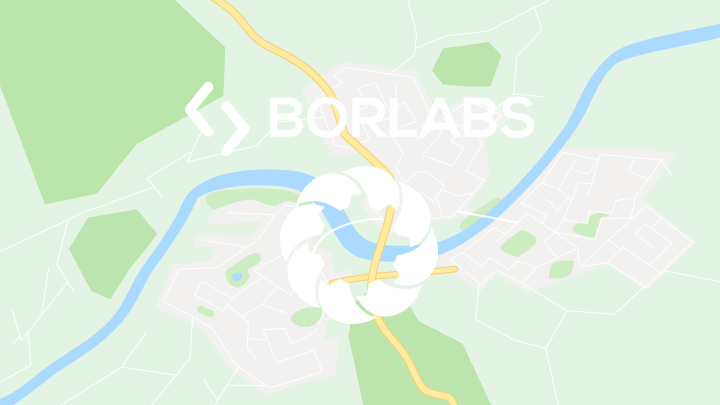
Annex C: Battle at the pontes longi (battle of the long bridges)
The Roman writer Tacitus reports that the Roman army after the battle in the rough (s. App. B) in 15 AD immediately withdrew from Germania. This suggests that the Romans suffered very heavy losses; especially their cavalry and auxiliary troops appear to have been significantly stricken.
Germanicus, who was at that time west of the Weser, initially withdrew to the Ems and then led 4 legions on the river and sea back to the Lower Rhine.
These suffered heavy losses by a storm surge. Previously, he ordered the general Caecina, with four legions, namely, the 1st, 5th, 20th and 21st (all in all, 28 000 to 30 000 men, including baggage train), to repair a path called “pontes longi" (“long bridges") that was built by the Romans around the year 1 AD: “Caecina, who led his own force, was returning by a well-known route, but was none the less warned to cross the Long Bridges as rapidly as possible." Since wood boardwalks were unsuited for the movement of Roman legions, the pontes longi must have been causeways.
When Caecina and his troops reached the causeway which was in a desolate state, they were surrounded by Arminius’ warriors who had been marched up in much greater numbers than expected,
in such a way that the Romans repaired the causeway in the swampy valley, while the Germani camped on the wooded height. So Caecina led build a camp, while the other part of the troops were busy with the attacks of the Germani. After heavy and lossy fighting the Romans retreated in the evening back to camp. The Germani then let flow down water masses from the heights by diverting creeks, which also foiled the aboriously built causeway. The next day the Romans gave up the further construction on the causeway and continued their march via a elevated plane which however apparently was too narrow to allow for the planned “square formation", by which the baggage in the middle should be protected by the 5th and 21st legion which were set on the flanks, whereas the 20th formed the rearguard and the 1st the vanguard. However the legions on the flanks abandoned their position and gave the Germani the opportunity to attack the baggage. In the battle for the baggage mainly the 1st Legion distinguished itself by courageously fighting against the Germani. Soon the way led again in swampy terrain; in the evening the Romans were finally able to fight their way under enormous losses to a dry terrain, where they built a makeshift camp and hardly had some supply.
Wikipedia: Die Schlacht an den Pontes longi
For the campaign of AD 15, Tacitus had described the setting up of two Roman armies, one under the leadership of Germnicus, one under the leadership of Caecina: “Germanicus, then, after handing over to Caecina four legions, with five thousand auxiliaries and a few German bands drawn at summary notice from the west bank of the Rhine, took the field himself with as many legions and double the number of allies “(Annals I, 56). In the early summer of 15, the armies operated independently of each other, then met during the summer at the river Ems, and marched from there to the locations of the Battle of the Teutoburg Forest, with the ensuing Battle on the wilds. After the battle on the wilds, the armies separated according to Tacitus, Germanicus moved with his army to the Ems, Caecina moved with his army to the Pontes longi:
“Shortly afterwards, the prince [Germanicus] led his army back to the Ems,
– and withdrew the [his 4] legions as he had brought them, on shipboard;
– a section of the cavalry was ordered to make for the Rhine along the coast of the Northern Ocean.
Caecina, who led his own force, was returning by a well-known route, but was none the less warned to cross the Long Bridges as rapidly as possible." (Annals I, 63)
Thus the starting point for the events of the Battle of the Pontes longi is the location of the Battle on the wilds, the forest south of Warstein, where the Germanicus army and the Caecina army seperated. From here or rather from the north adjacent Haar Caecina led the 1st, 5th, 20th and 21st legion to the Rhine. However e could not take the shortest route, which would have led him to Vetera/Xanten, but he had to make a detour to repair the pontes longi. Thus the pontes longi probably were the causeways through the Wuppertal Depression (s. chap. 2.4.1), in order to cross the Rhine at Novaesium/Neuss.
At the march through the Wuppertal Depression, at first the Germani were able to attack the Romans from the wooded heights in the valley of the Ennepe between Hagen and Gevelsberg.
Fig. C-1: Battle at the pontes longi day 1, march of the Caecina legions (blue) and the baggage (dark blue) through the Ennepe valley, attack of the Germani (red)
On the ridge of the Linderhauser Ruecken on the 2nd day of the battle the Romans were able to march in a rudimentary square formation, in order to reach at Heckinghausen the valley of the Wupper and thus to move back in swampy terrain.
Fig. C-2: Battle at the pontes longi day 2, march of the Caecina legions (blue) and the baggage (dark blue) in square formation via the Linderhauser Ruecken, attack of the Germani (red)
In Sonnborn the Caecina army was able to leave the Wuppertal Depression and at this time the Romans had fought their way to dry terrain. Then Caecina led the army over a bridge at Novaesium / Neuss on safe Rhine left bank area probably to Vetera / Xanten.
